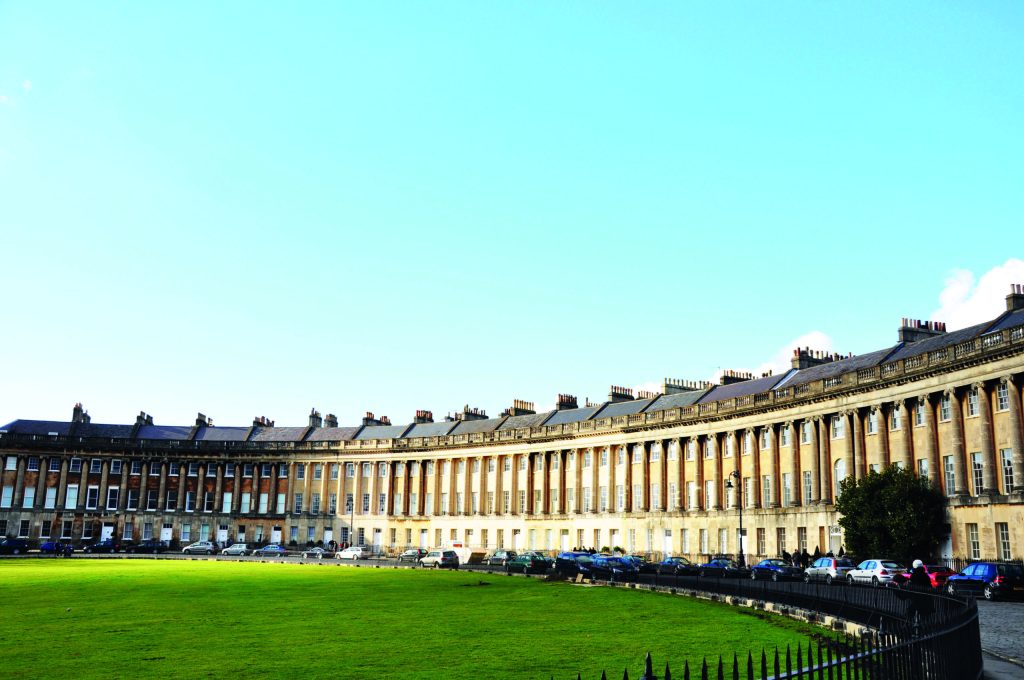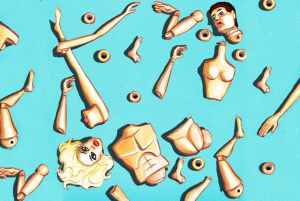In the center of Bath a giant obelisk sits in the middle of a little park called Queen’s Square. Standing in the park on a cool but sunny February morning, I realize that despite passing it on countless occasions in the 22 years I lived in the city — from playing bowls on the grass as a child to sheltering behind it to smoke cigarettes as a teenager — I have no idea what it is doing there. A black metal sign informs me that it was erected in 1738 by the Bathonian dandy Beau Nash in honor of Frederick, Prince of Wales. I wonder what Frederick thought about being presented with an obelisk.
The sky is darkening. In the 10 minutes I have been sitting there, waiting for a friend with parking troubles, the place has been almost empty.
Bath is a tourist town — or at least it was. To the Romans it was Aquae Sulis, a holiday resort where tired yet triumphant soldiers eased their blister-crusted flesh in its hot springs. For the Georgians, it was a home for the more degenerate elements of the aristocracy, as well as social aspirants like the family of the novelist Jane Austen. Sir William Thorn, in an 1816 biography of the celebrated British Army officer Sir Robert Rollo Gillespie, referred to ‘scenes of extravagance in this receptacle of the wealthy and the idle, the weak and designing’.
Still, for all the decadence Classical and Romantic, they left a beautiful place. Its honey-colored bricks of Bath Stone gleam in sunlight. Rows of townhouses have a human-scaled grandeur. Dark backstreets have a ramshackle Dickensian charm. Pockets of nature range from the elegant precision of the botanical gardens to the wild slopes and greenery of the Great Dell.
I appreciate that beauty more now I live on the Continent than I did when I lived there. Growing up in Bath, with a boredom bred by overfamiliarity and inexperience, you wonder why the tourists even come. Sure, the Roman Baths are nice, but are statues and dirty water worth traveling hundreds, or thousands, of miles to see? Surely not. Yes, Bath Abbey looks cool, but it is hardly Notre-Dame is it? Come on!
Locals get irritated with the tourists sometimes. A friend of mine lived on the Circus, where a ring of townhouses stretches around a patch of grass and trees, and kids used to fire water pistols at the tour buses. Yes, we knew the city lived and died on the income that passed through our shops, bars, restaurants and museums. But we resented it.
There is something faintly unreal about a city based so heavily around its past. It feels like inhabiting an enormous museum. Crowds of Chinese tourists gather on the Crescent — a curved street of handsome terraced houses designed by the architect John Wood — and take cheerful selfies before heading back to the industrial-technological heart of their homeland.
But a lot has changed. Not so much in the seven-and-a-half years since I left. More in the 18 months since I last visited. I did not intend to be away so long, or indeed to visit now, but my mother has died.
All the tourists have gone. When I run past Bath Abbey, the courtyard, which once was full of men, women and children looking up at the gargoyles or watching the motley collection of sword-swallowers and fire-breathers who performed there, is deserted. When I walked past the Crescent with a friend we saw only a few old women walking their dogs.
If you have lived in Bath since the beginning of the pandemic you might not have noticed the changes so viscerally. I have slowly adapted to the closures in my Polish town, as one slowly adapts to the arrival of winter, and only on occasion — if very sad occasions — do I remember what it was like to roam its bars and restaurants. Bath, on the other hand, I last saw in 2019 and the difference is stark. It feels suddenly dead. One almost expects zombies to crawl out of the drains.
All the pubs that throbbed with cheerful, half-drunk activity have closed. The secondhand bookstores that packed so much enlightenment and inspiration into their shelves have locked their doors. The shops that sold weird antiques, eccentric souvenirs and unpredicted necessities are ghostly presences, no more real than the old video-rental stores.
A sense of gloom has thickened like gravy on a plate before, when you passed people on the street, despite it being England, there was always a good chance of getting a smile and a bright ‘Hello!’ Now, the smiles often harden into a rictus as people silently, passive-aggressively command you to veer further from their path. I don’t blame them. Who knows what their stories are? But it is sad.
There is definitely room to question Britain’s dependence on its heritage and service industries. There will be a time to debate what sort of innovation can shake western Europe into a more future-oriented attitude. But I long for tourists now as I long for life. I long for energy to return to the streets, to affirm existence, to make the Bath Stone gleam.
Shaftesbury is an otherworldly place — or at least it was. Nestling 33 miles southeast of Bath in Dorset, deep in Thomas Hardy country, it is surrounded by charming fields and haunting parish churches. With its cobbled streets and venerable cafés, Shaftesbury almost appeared to exist outside of time when I visited as a child. Gold Hill, where the young Ridley Scott filmed a famous bread commercial with Dvořák’s ‘New World’ as a soundtrack, became a modern English icon, an imagined past ideal that transcended progress and decay.
Not anymore. The pandemic that has ripped across the world has brought the future in all its morbid caution and distrust. The cafés and shops are closed and Gold Hill, where families walked up and down and took cheerful photographs, is empty and forlorn. City workers have smartly taken advantage of the lockdowns to tear up the road in the abandoned main street. All you can hear is drills.
We go for the funeral, to the town where Mum’s parents lived for decades, near to the countryside where she grew up. After the service — attended by only 30 people, according to regulations — we have as much of a wake as it is possible to have by ordering takeout drinks from Costa Coffee. Costa, an Anglo-Starbuckian coffeehouse chain, always sat uneasily in such a traditional place, but we are shocked and moved when the manager insists on refusing payment after hearing that we have just held a funeral. Kindness endures, shuffling on from soul to soul.
There is something to the idea that crises give us a more sober, more serious outlook on existence. It is tempting, in good times, to relax into complacency and to ignore the nature of the world beyond our gaze. Still, one longs for a little of that innocence now — for the laughter of young people, and the contentment of the old, and the sense that there can be moments of pure satisfaction.
I have to go back to Poland. I take the train to Luton Airport and go through security, bundling useless pounds and pennies back into my pockets. All of the duty-free stores are closed, except for a little place where I can get a drink and a pen to write with. I look at the Union Jack-striped pencils and the London Bus keyrings and go to find the prayer room. It is closed as well. There is no smoking area.
A woman sitting in the departures lounge has the same short, angular haircut as Mum had. She is wearing a blue jacket that Mum might have worn. Because of the flimsy surgical mask she is wearing on her face, her other features are obscured. I look for a moment too long and then keep walking to my gate, to be carried back to Poland, hoping that next time I return to Bath the city will have come to life again.
This article was originally published in The Spectator’s May 2021 World edition.


















